Week 2 – Digital XRay Sensor Review – The Good The Bad And The Ugly – Part 2
-Good Image Quality – Part 1
-Reliability – Part 2
-Price – Part 3
-Functionality – Part 4
Reviewed Sensors:
-Eva by Dent-X (AFP Imaging)
-SuniRay-Suni Corporation (Orange Dental)
-Dixi 3-Planmeca
-Dexis Platinum-Dexis
-CDR Elite-Schick
-Kodak RVG6100- Kodak (Owned By Carestream Now)
Part 2: Reliability
Reliability seems like a very difficult item to judge. Digital X-Ray companies do not fall under the same systems that govern auto parts or other industrial items where the failure rate is known to a very good accuracy. After much research I found no way to actually determine how often a sensor needs repair or any statistics offered by the manufacturer.
Furthermore, even if we had good statistical data on number of failures vs number of sensors in the market that in and of itself would not necessarily be a measure of the sensors inherent reliability, but would be impacted by the use of the sensor itself by the client. There are many ways a sensors life can be shortened by the owner of the sensor. Using a sensor without a holder will often result in the sensor being bitten or the cable being bitten, which is a very fragile part of the sensor. Secondly, use of the sensor without a proper barrier shield will lead to excessive moisture getting inside the sensor housing and potentially corroding or shorting out its internal components not to mention the corrosive nature of saliva itself to break down the plastic that the sensor is made out of.
The most common information provided to doctors about most dental products is hearsay or through anecdotal evidence. Since, all dentists are part scientist by the very nature of their profession they know that there are no facts in hearsay and that it is a very unreliable method for determining even a version of the truth. As for anecdotal evidence it can be very beneficial if there is enough anecdotal evidence provided in a manner where the source can be distinguished that you can map a trend.
The problem with anecdotal evidence in a small industry, such as dental, is that there is never enough of it to properly map trends and to overcome the idea that people are far more likely to take the time to relay information about a product that dissatisfies them then to relay information about a good experience and even less likely to say something about an experience that was just mediocre or okay. This can greatly skew the evidence. Also, it is often found that products which are seen as luxury or superior to other products and that caused the user to pay a higher cost are less likely to elicit the owner to speak poorly of the product. For example Lamborghini owners are rarely heard complaining of how often they suffer break downs or problems with their vehicles because they paid so much for them that saying anything negative about them can feel as if they are making themselves appear ignorant in their purchasing decisions. This same rule applies to very popular items where users feel like the problems are either a rarity that they had the misfortune of suffering or even that the user themselves were at fault. This can often happen when making large purchasing decisions because the buyer feels deeply invested in their decision to purchase.
These ideas all lead me down a road of confusion as to how I was going to pursue measuring the reliability of these products. I will lay out my methods here and hope that I can come to some method of giving useful information on the sensors.
With anecdotal evidence, hearsay, and statistical analysis unavailable I pursued the topic in this manner.
First, I assume that the warranty of a product and the cost and coverage of that warranty displays the manufacturers belief in the reliability of their product. If the warranty is very short or if their is only a warranty when associated to a high price then I will use that information to draw conclusions as to the manufacturers believe in their own product.
Secondly, there is very little actual technical data available for sensors such as wiring diagrams and component disclosure, but their are things that we can see and draw conclusions from the actual physical makeup of the sensor
Finally, there is my unfiltered opinion. Probably the least valuable of the three, but I felt like I needed three things to go by and I couldn’t think of a third.
I will go through the sensors in no particular order.
Eva by Dent-X (AFP Imaging)
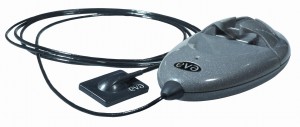
Eva X-ray Sensor
Warranty-
The Eva Sensor comes with a 2 Year Parts and Manufacturer Service agreement.
They advertise an “Eva Guard” protection plan with no questions asked, but I can not find any listed pricing for this service. So I am going to give the warranty life of the product at 2 years. If they assumed on average that the sensor would last longer in comparison with its price I assume they would have offered a longer warranty.
Physical Inspection –
The casing is plastic as are all sensors now which I believe to be the best method for a sensor casing. Any type of metal casing would be very difficult to bond together, but this is a moot point seeing as how all sensors now have plastic casings.
The sensor uses an inexpensive interface to attach to the computer. The sensor on one end has a half egg like light plastic piece that plugs into its half egg like interface that you would need to have in each room. This interface is powered by the usb bus and plugs in through a usb 1.1 or usb 2.0 port on your computer. The connectors at the interface are keyed so as not to be able to be plugged in incorrectly and are very durable. The interface also provides a location to hang the sensor when not in use. The interfaces although adding an extra cost are sold for roughly 300$ last time I saw a quote, making them a fairly inexpensive edition.
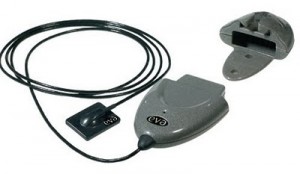
Eva X-ray Sensor
The sensor cable is attached with some strain relief at both the sensor and the interface, but the cable, sensor and interface are all one piece. Damaging any of the three will result in a fairly expensive repair if not a need for a replacement.
The sensor seems to be well constructed, the cabling between the interface box and the sensor is reinforced at both ends and appears to be sturdy. The connector at the interface is not a standard connector so their is no technical data to fall back on, but based on its looks I would say that it will most likely not fail, but any connector that open will be more likely to suffer some type of corrosion do to its increased surface area.
SuniRay – Suni Corporation (Orange Dental)

Suni Ray X-ray Sensor
Warranty-
2 Year Standard Manufacturers Warranty
45$ temporary sensor provided during warranty work if requested
At the time of purchase you can spend an additional $1,995 to extend the warranty an additional 3 years to a 5 year warranty.
Given that the suggested retail value of the sensor is $6,995 I assume that they expect roughly 1/3 of sensors to fail between year 2 and year 5. This would recoup that loss by charging $1,995 to warranty these units for that time period.
Physical Inspection-
The Suni Ray has a roughly 3 foot long cable between the sensor and the sensor interface. The sensor interface being small and light. The sensor interface plugs in through a 16 foot USB A to Mini B Cable. The sensor is powered across the usb bus and must be plugged into a USB 2.0 port that provides a steady 500ma. The sensor, when sold, is recommended to have one of these suni provided usb cables for each room and to only move the sensor around. This means that the port you are plugging in and unplugging is mini B vs B or A. Mini B has an expected disconnect life of 10,000 disconnects vs A plugging into B which has an expected live of 1,000 disconnects. This should extend the life of the sensor when moving from computer to computer.
The cable is properly reinforced at both ends, but is one solid cable, meaning that damage to the cable, sensor or interface will result in the need for warranty repair or replacement.
I believe the Suni to have an expected life of 2 years at $6,996 a sensor, but viewed as an $8,995 priced sensor it has a 5 year life expectancy.
Dixi 3-Planmeca
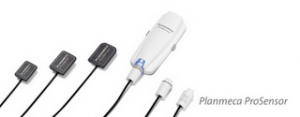
Planmeca X-ray Sensor
Warranty –
The planmeca sensor comes with some type of warranty but after reading many user manuals and product brochures I found that they offer what they call a 5 year warranty program, but based on it being called a warranty program I assume their is a fee involved or that the warranty covers less of the sensor as time goes by.
Physical Inspection –
The sensor cable is strengthened with Kevlar, and inside the cable there are only two wires.
The sensor can be fully immersed in disinfectant for effective infection control and prevention.
The sensor interface can be used with a network cable and does not need to be tethered to the usb port on a computer.
I can not see the full details of the sensor warranty and thus find it difficult to make a full determination on this sensor, but I can say that it appears that planmeca has made huge efforts to promote the durability of this sensor. It also uses what is called induction to be the connection between the sensor and its interface. This is essentially a connector with no connector. Its magnetic.
Based on all of this the sensor is likely to be very reliable given that they do not suffer any data transmission problems coming from the use of induction as their primary sensor connection. This technology is by no means new, but has only recently been put into production for digital xray technology. Although the theory would say that this connection is reliable their is no history in digital xray technology to prove out this idea.
Dexis Platinum Sensor-Dexis

Dexis Platinum X-ray Sensor
Warranty – (Contact Your Sales Rep)
Well I personally know what their warranty is; they don’t have one. Dexis requires you to pay roughly $2,000 a year to be a part of their sensors support plan. This means they must not expect their sensors to last at all.
You can talk to several companies that manufactur CCD and CMOS chips and find out that you could have your very own sensor with drivers manufactured by them for about $1,800 (if you have enough cash to buy 600 sensors-Which maybe 300 dentists should just get together and have their own sensor made for them. Then resell it to other dentists as well for about $4,000 grand a sensor and make a nice profit.)
The warranty information was so terrible I moved on to physical makeup.
Physical Inspection –
Physically the sensor is similar in design to the XDR. Plastic composite sensor casing, single data cord coming directly from the sensor to a USB A plug. The sensor is powered across the USB bus and seems to have only one primary source of failure. The USB A plug. This connector is rated for 1,500 connections. (USB life cycle resource)
If you move this sensor 8 times a day from room to room as you have patients who need xrays then your sensor connector will last for 187 work days. I see this as a huge problem. There is a simple solution which would be to use a very short A to A extender that you plug into your sensor once and use it to unplug and replug into your usb powered hub. Then replace the extension when it fails. This is my idea though and many Dexis sensors are being sold and the doctors are not hearing anything about needed to protect the connector.
My opinion on this is obvious. The Dexis sensor is the most expensive sensor on the market, with the most expensive warranty, and I have yet to figure out why people like them. Ive’ seen the image quality and it is good, but it is very similar to sensors you can purchase at nearly half the price.
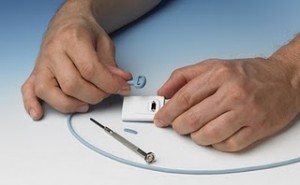
Schick Elite X-ray Sensor
CDR Elite-Schick
Warranty –
Schick offers a 2 year limited warranty. They then offer the PTC warranty Service Club where you pay $864 a year to get what appears to just be discounted pricing on their sensors.
CDR Elite Size 2 Sensor – 3’ $2,875 n/a
CDR Elite Size 2 Sensor – 6’ $2,875
CDR Elite Size 2 Sensor – 9’ $2,875 n/a
CDR Elite Size 1 Sensor – 3’ $2,625 n/a
CDR Elite Size 1 Sensor – 6’ $2,625 $7,075
CDR Elite Size 1 Sensor – 9’ $2,625 n/a
CDR Elite Size 0 Sensor – 3’$1,835 n/a
CDR Elite Size 0 Sensor – 6’ $1,835 $4,735
CDR Elite Size 0 Sensor – 9’ $1,835 n/a
CDR Elite Single Cable Kit – 3’ $749 n/a
CDR Elite Single Cable Kit – 6’ $749 n/a
CDR Elite Single Cable Kit – 9’ $749 n/a
CDR Elite Remote B2270000R $1,478
So it looks like even after taking a 860$ a year from you you would end up paying close to 3 grand to replace your sensor.It looks like your service club fees pay the profit and they have you buy the sensor at cost plus. The standard warranty of 2 years is pretty good so you can expect 2 years of life out these sensors.
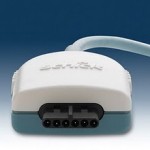
Schick Elite X-ray Sensor
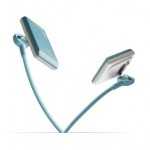
Schick Elite X-ray Sensor
Physical Inspection –
The CDR Elite is much like all of the other sensors on the market. Plastic casing, wire going to specialized interface, interface connecting to computer through USB connection.
There is one specialization of the schick, the cable going to the sensor is removable and if it is damaged can be replaced. The replacement cost is by no means free though. If you are willing to pay the 72$ a month to be a part of the customer care plan a replacement cable will only run you $749 I think this is an absurd price, but it is less than a $9,000 new sensor from schick or a $2,800 replacement sensor if you carry the schick support plan.
The Molex connector used to attach the sensor to the interface looks reliable and because you are not moving the interfaces themselves you are not likely to suffer any usb connection problems. Based on the warranty and estimated replacement costs schick looks like it is anticipating the same costs and possible failure rates on their sensors as the other manufacturers. I anticipate the life to be 2 to 5 years. Although sensor interfaces are expensive and I do not know how long they will last and the cost of replacement sensor interfaces are close to $1,500 with the service plan. It seems like there could be a lot of potential additional costs if you have warranty problems, but in my experience schick sensors are reliable pieces of equipment but can be fairly expensive.
Kodak RVG6100- Kodak (Owned By Carestream Now)
Warranty Information – I have no idea
Physical Inspection –
The RVG is a direct to USB sensor. It appears to have no default manufacturers warranty that I can find in any of the product information sheets. The sensor has a connected cable and inline interface with similar possible issues as the Dexis Platinum when it comes to needing to plug the sensor directly into a USB port.
If anyone has more information on this sensor I apologize but I am grossly lacking information. I would love to know more from an actual kodak customer who has experience with the pricing of both the sensor and warranty pricing.
Quick Ray Sensor
Warranty- Our Warranty is a 5 Year Warranty
Physical Inspection-
The sensor is a direct to USB digital X Ray sensor. The cable goes into a protective housing and has a two wire strain relief system.
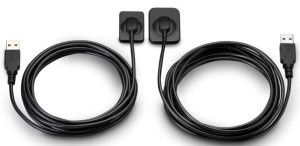
QuickRay Size 1 and Size 2 Side By Side
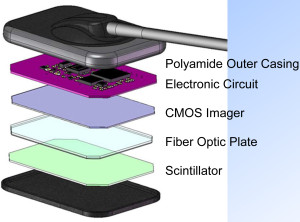
- QuickRay Sensor Internal Diagram
Recap
If you are considering the reliability of a sensor you can assume that they are all going to have similar life spans except for possibly the Planmeca unit that has a casing that is so well constructed that it can be fully submerged in water. As a doctor I would look at the overall cost of the initial sensors and interfaces and imagine that given a possible 15% difference in life expectancy they all are going to have fairly similar lifetimes. So look at your costs over five years and anticipated costs of replacement sensors and if there is more than a 15% price difference from one to the other and the image quality is similar I would utilize the less expensive sensor option.
The Quickray sensor has a great warranty and its initial cost puts it high on my list.
Legal Stuff
All Trademarks including Schick, Dexis, Kodak, Eva and any others are the property of their respective owners. They are not affiliated with Sodium Systems LLC
Quickray is a trademark of Denterprise International and we are a reseller of Denterprise International


Leave A Comment
You must be logged in to post a comment.